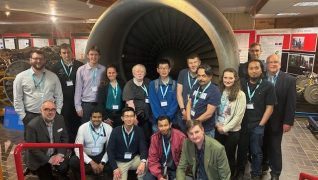Drag Reduction Strategies

Dr Zahra Soltani – Research Associate Project
“I started working at Imperial College London as a research associate in March 2019, under the supervision of Dr Matthew Santer. During my PhD at ETH, Switzerland, I developed a nonlinear FE code for the study of composite morphing wings. My background mainly focuses on developing efficient nonlinear Finite Element (FE) codes and machine-learning-based optimization codes; the codes help the analysis and optimum design of adaptive structures under large amplitude deformation.” The focus of [my] project is on the control of turbulent boundary layers”
“My current project is supported by the EPRSC and is titled “Understanding and exploiting non-equilibrium effects on turbulent boundary layers: Towards realisable drag reduction strategies”. The focus of the project is on the control of turbulent boundary layers using streamwise travelling waves of spanwise wall velocity, produced using a novel active surface. The active surface is created via attaching a kagome lattice to a membrane skin. This ensures it can generate controllable in-plane travelling waves in a structurally supported continuum. The innovative compliant adaptive surface can produce waveforms of variable length and speed in a robust and repeatable way.”
“It is mainly an experimental-based project with a great degree of uncertainty on the control of turbulent boundary layers. The 10×5 wind tunnel is pivotal in this because it gives us the required section and length for doing the tests and getting reliable results.”
“It is of course a nice experience working with the 10×5 team, there is a mixture of experienced technicians like Russell Harbison and expert staff, like Dr Kevin Gouder, under the great supervision of Professor Jonathan Morrison.”


